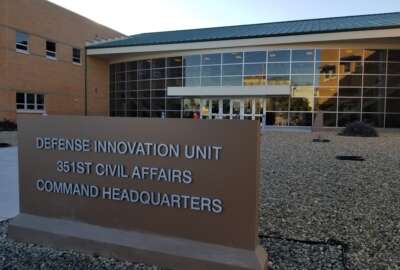Army Chief of Staff Gen. Ray Odierno says the ups and downs caused by sequestration, a series of continuing resolutions and the partial government shutdown, have led to an era of “dynamic uncertainty” for the Army.
“The problem I see with sequestration is this continuing impact it’s having on our civilian employees,” Odierno told Federal News Radio’s DoD Reporter Jared Serbu Tuesday at the 2013 AUSA Conference.
After enduring six to 12 furlough days during fiscal year 2013, DoD civilian employees faced another round of furloughs at the start of this month because of the partial government shutdown.
The continuing resolution Congress passed and the President signed to end the shutdown contains the possibility of even more uncertainty come January, when another batch of furloughs may occur if a new budget deal is not reached.
In Odierno’s two years as the Army Chief of Staff, he’s seen 13 continuing resolutions come and go, which, over the long term, has created a predictability problem for the military.
“The bottom line is you submit a budget, you work very hard with Congress to build a budget for the Army, which we think is the best budget, the best use of the dollars we have available,” he said. “When it doesn’t get passed and you go to a continuing resolution, it doesn’t match up with your priorities. And then what happens is you get wasteful, because you can’t necessarily let new contracts under a continuing resolution. You can’t do things that might help you to start moving forward even with reduced budget levels.”
Sgt. Maj. Raymond Chandler, the Sergeant Major of the Army, agreed with Odierno about the detrimental impact of that uncertainty on the uniformed forces.
“If we’ve got predictability, we can make sure that our soldiers are resourced and have their needs fulfilled for readiness and training, which is really the most important thing we’ve got to do as an Army is to be trained and ready,” Chandler told Serbu at the AUSA Conference Tuesday. “Right now, because of sequestration, we just really don’t know how much we’re going to have, where we need to apply those resources and how we’re going to make our Army better.”
The problem with sequestration is not the amount of the cuts to the Army’s budget but how those cuts are implemented.
“It’s all up front,” Odierno said. “And when you want to take so much money out up front, you’re limited in what you can do. So, we have to really hit readiness and modernization of our Army in order to meet the requirements of sequestration. If we could backload it a bit, it would help us to better plan for it and come up with a better solution at the same budget level.”
During a press conference Monday, Odierno said that only two Army brigades are fully trained and ready to deploy.
“We’re focusing on individual and small-unit training in those units that are not fully resourced, like the two brigades that the chief spoke about yesterday,” Chandler said. “The challenge with that is you’re not able to continue to develop that training to larger, more larger-unit collective training tasks across the Army. So, you only stay at a very low level of training.”
For example, at the start of a training cycle, a soldier takes part in physical fitness, individual weapons qualification and training on individuals tasks.
“There are a lot of individual tasks, but eventually, you want to bring those together for six to eight to 10 people to train together as a collective unit, a squad,” Chandler said. “We’re at that baseline now for most of the Army and our ability to grow that from a squad to a platoon to a company is really not possible at this moment because of the effects of sequestration.”
On Monday, Odierno described a “get well” plan for the service as it enters fiscal 2014, which assumes another continuing resolution and another round of sequestration cuts.
“With worse case, we’re going to have to go to some level of fencing a part of the force that we’re going to train full-up,” Odierno said. “We’re fencing around seven brigades plus all the associated enablers and support capability that goes with the brigades and we’re going to try to get them trained. We hope to have that done by June 2014.”
In order to do that, the rest of the force will have to be trained at lower levels.
While the Army was dealing with sequestration and the shutdown, it also continued to downsize its force from a high of 570,000 to 530,000. Ultimately, the force will be reduced to 490,000 or even lower, Odierno said. At the same time, the Army will have to reduce its civilian service.
Odierno admitted that reducing staff, especially individuals with skills and years of experience, would be tough.
“These are people who dedicated themselves to the country, dedicated themselves to the mission, and it’s not because they’re not doing their job well, it’s just that we’re getting smaller,” he said.
Originally, the Army planned to reduce its force to 490,000 by 2017. But, if sequestration does happen in 2014, the service will have to speed that process up and reach that number by the end of 2015. The Army already announced that it was eliminating brigade combat teams. That process will speed up toward the end of 2015.
“If we execute full sequestration, the Army will be reducing end strength between now and all the way to 2019 probably,” Odierno said. “And we’ll have to reduce both the active and Reserve component end strength.”
RELATED STORIES:
2013 AUSA Conference
Full government shutdown coverage
Congress votes to end shutdown, avoid US default
Copyright
© 2024 Federal News Network. All rights reserved. This website is not intended for users located within the European Economic Area.





